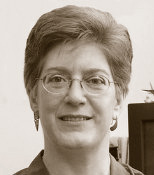
A Web for Everyone: Accessibility as a Design Challenge Date: This event took place live on January 21 2014 Presented by: Whitney Quesenbery Duration: Approximately 60 minutes. Cost: Free Questions? Please send email to Description:Broadening our vision to design for everyone is a conscious act of innovation. Instead of focusing on barriers, we can focus on enabling expression in multiple ways, for products that are modern, global, and responsive, and which work for people with a wide range of abilities. All of the tools and principles of an excellent user experience also support accessibility, just as web design that is responsive to diversity of devices is also responsive to a diversity of human needs. The core design principles for a web for everyone are:
If we aim to design for all senses we can focus on good design to create delightful user experiences where accessibility and usability work together. Don't miss this informative webcast presentation. About Whitney QuesenberyWhitney Quesenbery combines a fascination with people and an obsession to communicate clearly with her goal of bringing user research insights to designing products where people matter. She's written three books - Storytelling for User Experience: Crafting stories for better design and Global UX: Design and research in a connected world - to help practitioners keep users in mind throughout the creative process. Her latest book, A Web for Everyone: Designing accessible user experiences is a collaboration with Sarah Horton. She's also passionate about civic design and runs the Center for Civic Design with Dana Chisnell, where they aim to improve the usability and design of ballots and everything else about elections. They work with election officials, conduct research, and publish the Field Guides to Ensuring Voter Intent. Before she was seduced by a little beige computer into software, usability, and interface design, Whitney was a theatrical lighting designer on and off Broadway, learning about storytelling from some of the masters. Follow Whitney's practical UX advice anytime on Twitter @whitneyq or find her next event on Lanyrd. |
|
|
|
